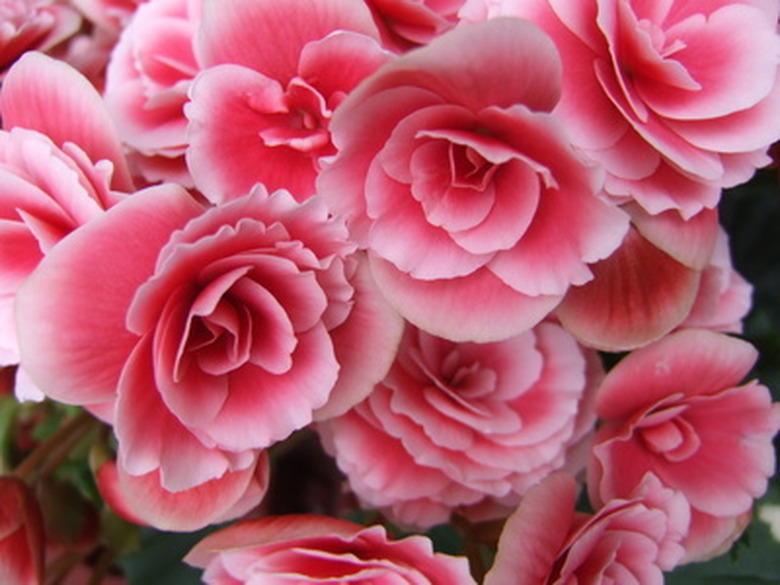How To Grow Non-Stop Begonias
Things Needed
- Begonia tubers
- Shallow containers
- 4- to 6-inch pots
- Planting containers and potting soil
- OR
- Garden bed
Non-stop begonias grow from tubers, and are also called tuberous begonias. They bloom continuously all summer. Just before the first frost, trim the foliage and dig up the tubers for winter storage. Non-stop begonias are not cold hardy, and they require a dormant period.
Non-stop begonias are available in dozens of color combinations; the plant habit may be upright or trailing. Choose the species with the characteristics that suit your purpose.
Step 1
Select non-stop begonia tubers that feel firm and solid. Small sprouting buds may even appear on some tubers. These tubers are ready to grow as soon as you get them into soil.
- Non-stop begonias grow from tubers, and are also called tuberous begonias.
- Non-stop begonias are available in dozens of color combinations; the plant habit may be upright or trailing.
Step 2
Start the tubers indoors in flats for the earliest flowers. Start them about 8 weeks before the last expected frost for your area. Plant the tubers 1/2 inch deep in shallow containers. When two leaves appear from each tuber, move the tubers to individual 4- to 6-inch pots.
Step 3
Pinch off the first early flower buds so the energy goes into growing stronger plants.
Step 4
Prepare a garden bed by tilling the soil until it is finely textured. Add compost to improve the soil. Begonias need a location with partial shade and well drained soil. Dappled sunlight is ideal. Tubers will rot if they become water-logged.
- Start the tubers indoors in flats for the earliest flowers.
To plant non-stop begonias in a container, fill a clean planting container with humus rich potting soil.
Step 5
Transplant the begonia plants to the garden bed or to outdoor planting containers after the danger of frost. Set the plants at the same depth they were growing in the small pots.
Step 6
Water and feed the begonias after transplanting. Allow the soil to become nearly dry to the touch between watering again, but don't let it get completely dry. Check containers daily. Containers dry out quickly and need more frequent watering than garden beds.
- To plant non-stop begonias in a container, fill a clean planting container with humus rich potting soil.
Step 7
Feed non-stop begonias with diluted fertilizer every two weeks. Remove spent blooms to encourage more flowers and keep the plants tidy.
Step 8
Pinch off the female flowers to keep the plant from wasting energy developing seeds. Non-stop begonias bloom in groups of three flowers. The large flower in the center is the male, and the smaller flowers on each side are the females.
Tip
Examine your begonia tubers. One side is indented, or bowl-shaped. Plant this side up. The leaf and flower stems grow from the indented side, and so do most of the roots. You may notice small buds sprouting when you plant the tubers; they are leaf buds. Be careful not to disturb them. For a fuller effect in a large container, use two or three plants instead of just one.
